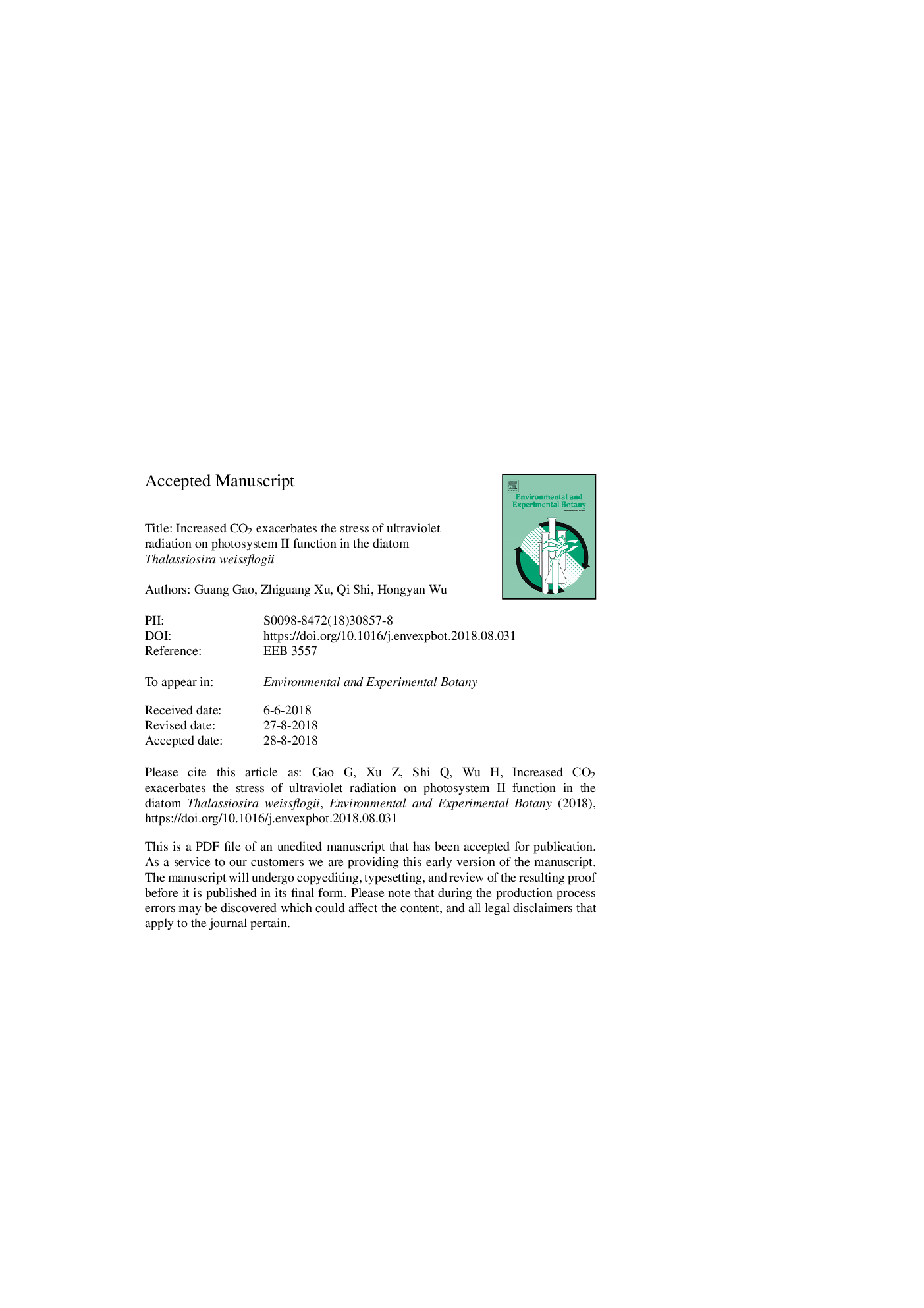| Article ID | Journal | Published Year | Pages | File Type |
|---|---|---|---|---|
| 10144875 | Environmental and Experimental Botany | 2018 | 47 Pages |
Abstract
Diatoms usually dominate phytoplankton community in coastal waters and experience rapid changes of underwater light. However, little is known regarding how increased CO2 would affect diatoms' capacity in dealing with changing photosynthetically active radiation (PAR) and ultraviolet radiation (UVR). Here, we cultured a globally abundant diatom Thalassiosira weissflogii under two levels of CO2 (400, 1000 ppmv), and then analysed its PSII function during an increase in PAR and UVR to mimic an upward mixing event. UVR noticeably reduced photosystem II (PSII) activity (FV/FM) during the high light exposure, which was more significant for cells grown at the higher CO2 condition. The PsbA removal rate (KPsbA) was synergistically increased by high CO2 and UVR, while the PsbD removal rate (KPsbD) was decreased under higher CO2. Both CO2 and UVR had an inducible effect on sustained phase of nonphotochemical quenching (NPQs). The higher CO2 decreased the ratio of Rubisco large subunit (RbcL) to PsbA regardless of the radiation treatments. It seems that the increased NPQs and turnover of PsbA induced by higher CO2 were not enough to offset the stressful effect it brought about, particularly when higher CO2 was combined with UVR. These findings indicate that increased CO2 may exacerbate the harmful effect of UVR on PSII function in the T. weissflogii through reducing PsbD removal rate and the ratio of RbcL to PsbA during UVR exposure, and thus would affect its abundance and distribution in future ocean environment.
Related Topics
Life Sciences
Agricultural and Biological Sciences
Ecology, Evolution, Behavior and Systematics
Authors
Guang Gao, Zhiguang Xu, Qi Shi, Hongyan Wu,
